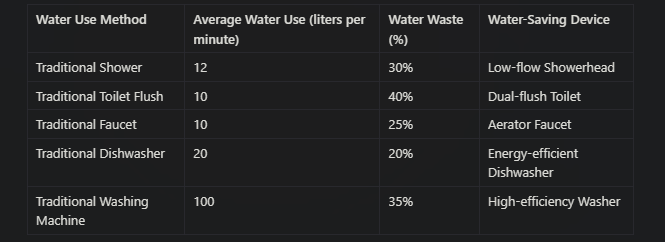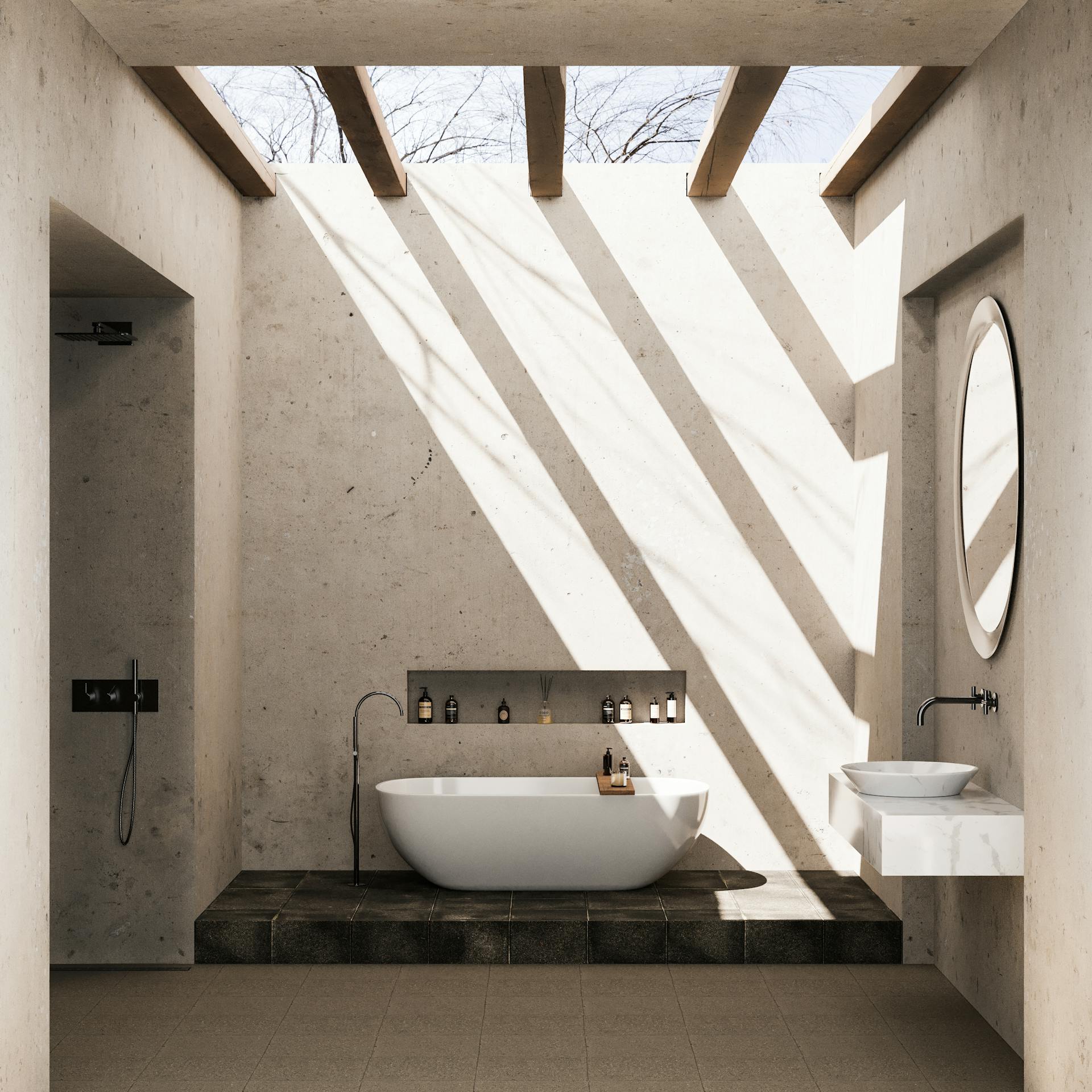The benefits of using water saving devices are vast, making them an essential addition to any home or business. Not only do they help reduce water waste, but they also lower utility costs, support environmental conservation, and improve overall health and safety. In this post, we’ll dive into the key reasons why these devices are a smart investment for anyone looking to promote sustainability and save money.
Table of Contents
Environmental Impact
The benefits of using water saving devices are significant for the environment. These devices help reduce water waste, leading to better conservation of freshwater resources. By minimizing water consumption, they also support the preservation of natural ecosystems, such as rivers and lakes, which rely on these water sources.
Moreover, using water-saving devices decreases the energy needed for water treatment, pumping, and heating. This reduction in energy consumption contributes to a lower carbon footprint, aiding efforts to combat climate change. Additionally, these devices are vital in addressing water scarcity issues, particularly in drought-prone regions, making them essential tools for promoting a more sustainable future.

Cost Savings
One of the most compelling benefits of using water saving devices is the significant cost savings they offer to homeowners and businesses alike. By reducing water consumption, these devices can lead to lower water bills, providing immediate financial relief.
For example, low-flow showerheads and faucet aerators can reduce water usage by up to 50% without sacrificing performance. This means that a household can save hundreds of gallons of water each year, translating to noticeable reductions in monthly water expenses. Similarly, efficient toilets use less water per flush, further minimizing costs.
In addition to savings on water bills, there are also indirect cost benefits. When less hot water is used, energy consumption decreases, resulting in lower energy bills. This dual saving can add up over time, making water-saving devices a smart investment.
Many local governments and utilities also offer rebates and incentives for installing water-saving devices, further enhancing the financial benefits. These programs can help offset the initial purchase and installation costs, making it easier for consumers to transition to more efficient water use.
Water Efficiency
Water efficiency is a critical aspect of sustainability, and one of the key benefits of using water saving devices is their ability to optimize water use without compromising performance. These devices are designed to deliver the same level of service while using significantly less water, making them essential in promoting responsible water consumption.
For instance, low-flow showerheads maintain water pressure while reducing the overall flow rate, allowing users to enjoy a satisfying shower experience with less water. Similarly, faucet aerators mix air with water, creating a fuller flow while minimizing actual water usage. These devices demonstrate that you don’t have to sacrifice comfort or functionality to save water.
In outdoor settings, efficient irrigation systems, such as drip irrigation, provide precise amounts of water directly to the plant roots, reducing runoff and evaporation. This targeted watering method not only conserves water but also promotes healthier plant growth, proving that efficiency benefits both the environment and gardens.
Additionally, smart technologies enhance water efficiency by allowing users to monitor and control their water usage. Smart irrigation controllers, for example, adjust watering schedules based on weather conditions, ensuring that plants receive the right amount of water without wastage.

Convenience & Automation
One of the standout benefits of using water saving devices is the convenience and automation they bring to water management. These devices not only save water but also simplify everyday tasks, making them an appealing choice for busy households.
Smart water-saving technologies are designed to provide users with greater control over their water usage. For instance, smart irrigation systems can automatically adjust watering schedules based on rainfall or weather forecasts. This means that gardens and lawns receive the right amount of water without any manual intervention, eliminating the guesswork and ensuring efficient use of resources.
Additionally, many modern water-saving devices come equipped with user-friendly features. Touchless faucets, for example, allow users to turn the water on and off with a simple wave of the hand, which not only conserves water but also promotes hygiene. Similarly, sensor-based toilet flush systems activate only when necessary, reducing unnecessary water flow.
These automated systems also provide valuable data, allowing homeowners to track their water usage over time. By monitoring consumption patterns, users can make informed decisions about further improvements, ultimately leading to greater savings and efficiency.

Health & Safety
The benefits of using water saving devices extend beyond water conservation and cost savings; they also contribute to enhanced health and safety in homes and communities. By reducing water waste and promoting better water quality, these devices play a crucial role in creating a safer living environment.
One significant health benefit is the reduction of stagnant water, which can become a breeding ground for harmful bacteria and pests, such as mosquitoes. By using water-saving devices like low-flow faucets and toilets, homeowners can minimize the amount of water that accumulates, reducing the risk of pest-related health issues.
Moreover, water-saving devices often help improve the quality of the water being used. For instance, some filtration systems designed for water conservation also eliminate contaminants, ensuring that the water used for drinking, cooking, and bathing is cleaner and safer. This is particularly important in areas where water quality is a concern, as it protects families from potential health risks associated with polluted water sources.
Additionally, water-saving technologies contribute to the overall maintenance of homes. By reducing leaks and excessive moisture, these devices can help prevent mold growth and structural damage, which can pose serious health risks. A dry, well-maintained home environment is crucial for the well-being of its occupants.
Ease of Installation
One of the often-overlooked benefits of using water saving devices is their ease of installation. Many of these devices are designed with user-friendliness in mind, allowing homeowners to implement water-saving solutions without the need for professional assistance.
For instance, devices such as low-flow showerheads, faucet aerators, and efficient toilets can typically be installed quickly and easily. Most of these products come with straightforward instructions and can be set up using basic household tools, making them accessible for DIY enthusiasts. This simplicity not only saves money on installation costs but also encourages more people to adopt water-saving technologies.
In addition, many modern water-saving devices are designed to be compatible with existing plumbing systems, which minimizes the need for significant modifications. This adaptability means that homeowners can upgrade their fixtures and appliances without undergoing extensive renovations, further enhancing the appeal of these devices.
For those who prefer a more automated approach, smart water-saving devices often come with user-friendly apps that guide users through the installation process step by step. This technology can make the setup even more intuitive, ensuring that anyone can successfully implement these devices.

Conclusion
In summary, the benefits of using water saving devices are manifold, extending beyond simple water conservation. These devices play a crucial role in protecting our environment, reducing costs, enhancing water efficiency, and promoting health and safety. Additionally, their convenience and ease of installation make them accessible for everyone, encouraging more households to adopt sustainable practices.
By integrating water-saving devices into our daily lives, we not only contribute to a more sustainable future but also enjoy the immediate advantages of reduced bills and improved water quality. Whether you are looking to enhance your home’s efficiency or make a positive environmental impact, investing in water-saving technologies is a wise choice.
Start your journey toward better water management today and experience the profound effects that these devices can have on both your wallet and the planet.


